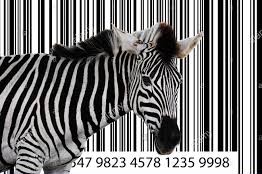How to source products to sell on Amazon
Amazon is a profitable venture for entrepreneurs and companies around the world. To succeed in this competitive market, you must learn how to source products efficiently. Understanding how to choose the best products to sell can make a huge difference.
This article is a comprehensive guide that provides valuable insights and tips on how you can source products for Amazon. We'll cover everything from researching profitable product ideas, to negotiating with vendors. This will help you navigate the dynamic ecommerce landscape to achieve success in your Amazon Business. Let's discover the secrets to successful product sourcing at Amazon.
Getting Started
Amazon sourcing is the process of locating, selecting and obtaining the products that will be sold on the Amazon marketplace. It involves:
-
Choose Your Business Type
-
Finding Profitable Product Idea
-
Finding Reliable Suppliers
-
Negotiating with Suppliers
-
Prepare Your Products
-
Inventory and Logistics Management
Amazon offers a global marketplace that allows sellers to maximize their chances of success by sourcing the best products.
Step 1: Determine Your business type
You must first determine the type of business you are. This will determine your overall strategy and sourcing. These are the most common business models to sell on Amazon.
-
Private Label: Create a brand of your own and source the products directly from the manufacturers. Ideal for creating a unique and distinctive brand.
-
Wholesale: Buy products in bulk at a discounted price from authorized distributors or manufacturers. This business model suits sellers who want to sell products that are already made and don't require extensive customization.
-
Dropshipping: List items from suppliers in your Amazon store and let them handle fulfillment and shipment. Dropshipping is a great way to get started with a low cost, hands-off strategy.
-
Online Arbitrage: Buy products from online retailers at a cheaper price and resell on Amazon. This requires careful research but can lead to quick profits.
Select the type of business that best suits your needs, preferences, and goals. Choose the Amazon business that best suits your strengths and your desired level of engagement.
Step 2: Find profitable product ideas
The next step after deciding how to sell on Amazon is to conduct thorough research in order identify profitable product ideas. Here are the key steps to effective product research.
-
Understand your target market's preferences and needs.
-
Discover which products are the best sellers on Amazon and why.
-
Use Amazon's Product Research Tools to get valuable data and analytics.
-
Analyze reviews of customers to gain insight into their experiences and preferences.
-
Keep up to date with the latest industry trends by following blogs, news and social media.
-
Examine the competition and identify any gaps or unique selling propositions.
-
Analyze profitability by analyzing price, profit margins and fulfillment costs.
You can then find the perfect product to suit your business and generate profit.
Step 3: Finding Reliable Suppliers
The next step after selecting a product is to search for reliable suppliers that can supply you with what you need. Your business model will determine the type of supplier that you select. The main types of suppliers are based on the different business models.
-
Private Label Suppliers - To find private label suppliers, you'll need to locate manufacturers or wholesalers that can customize and produce products to your specifications. Find suppliers who offer flexible minimum order quantities (MOQs) and are known for producing high-quality products.
-
Wholesale Suppliers: To follow the wholesale business model you'll need to build relationships with manufacturers or distributors who provide bulk quantities at discounted rates. Find suppliers who offer competitive pricing, reliable deliveries, and a variety of products that meet the needs of your customers.
-
Dropshipping Suppliers - With dropshipping you do not hold inventory, and instead rely on your suppliers to fill orders directly for your customers. You should partner with dropshipping companies that can deliver on time, and offer efficient order fulfillment. Choose suppliers who have a solid reputation, have reliable inventory management systems and offer competitive pricing.
-
Online Arbitrage Sources - When you engage in online arbitrage, your products are sourced from a variety of online marketplaces or retailers. Search for online retailers that offer competitive prices, have favorable return policies and a large selection of products. It's important to use reliable sources when looking for price differences and lucrative deals.
Consider factors like product quality, reliability and pricing. Also, customer service is important. Ask for samples from potential suppliers and create clear communication channels.
Step 4: Negotiating With Suppliers
Negotiating favorable terms and condition with potential suppliers is the next step after identifying them for your Amazon business. Negotiation skills will help you to secure favorable payment terms and better pricing. They can also build long-term relationships. Here are some tips to help you negotiate with suppliers.
-
Clarify Your Requirements - Clearly communicate the product specifications, desired quantities, and quality standards. It ensures both parties are clear about the expectations.
-
Ask about quantity and volume discounts. You can maximize your profits by negotiating better prices with suppliers for higher order quantities.
-
Payment Terms: When negotiating payment terms, consider your cash flow and financial capabilities. When discussing payment terms, consider your financial situation and cash flow.
-
Shipping and delivery: Discuss the shipping methods, timelines for delivery, and associated costs. Make sure the supplier is able to meet your delivery schedule, and that they offer reliable shipping options.
-
Build a Relationship - Establish a professional and positive relationship with your suppliers. A good relationship can lead to better deals and customer service, as well as preferential treatment.
-
Be flexible: Be open to compromises and flexible in your negotiation. Finding a solution that benefits both parties can lead to long-term relationships and mutually beneficial outcomes.
Negotiation is a collaborative effort, so maintaining an open and respectful communication line is essential. Aim for an agreement that is fair and beneficial to both you and your supplier.
Step 5: Prepare Your Products
Prepare your products to sell on Amazon once you've finalized your selection of products and forged partnerships with suppliers. Proper preparation of your products ensures that you comply with Amazon's rules and improves the customer experience. Consider these key points when preparing your product:
-
Product Labeling: Internationally
-
Amazon requires that products have an unique identifier. This is usually in the form of Amazon product barcode. You can buy the barcodes from the manufacturer (UPC or EAN) or you can apply for Amazon’s Fulfillment by Amazon barcode (FNSKU).
-
Product Packaging: Optimize packaging for shipping and display. Protective packaging can help prevent damage in transit. Packaging that is well-designed and reflects your brand will also increase the perceived value of products, and can attract customers.
-
Implement measures of quality control to ensure the products you sell meet your standards. It is important to inspect for defects, test the product's functionality and conduct sample tests. Consistently delivering high-quality products builds customer trust and positive feedback.
-
Compliance with Legal and Safety Regulations - Ensure your products are compliant with the applicable safety and legal regulations for the region where you intend to sell. This could include certifications, amazon barcode requirements, safety tests, and compliance with product standards.
Stay up-to-date with Amazon's policies and guidelines regarding product preparation in order to maximize your sales potential and maintain compliance.
Step 6: Manage Inventory and Logistics
The last step is to manage your inventory and logistics. Consider these key options:
-
Self-Storage & Shipping: You are able to store your product on your premises, and you can also take care of packaging and shipping when fulfilling orders.
-
Third-Party Warehouse: By partnering with a 3PL provider, you can outsource your product storage. They will take care of your inventory, packaging and shipping logistics.
-
Fulfillment by Amazon: Amazon offers a service called FBA, which allows you to store, package, and ship your products. This allows for faster delivery, easier access to Prime members, and better customer service.
You can manage your Amazon inventory by evaluating your business needs and these options for storage and shipping.
To conclude, finding products to sell on Amazon involves careful research, strategic decisions, and effective implementation.
Buyabarcode is the only Barcodes UPC provider that has had its UPCs accepted and recognized by both Amazon as well as Walmart. This is a testament to their reliability and compatibility across major ecommerce platforms. You can rest assured that your products will accurately be identified on Amazon if you purchase barcodes.
Buyabarcode Amazon barcodes can help expand your market.
Buyabarcode helps sellers compete in an e-commerce market by ensuring that Amazon sales are correctly identified with UPC barcodes.
Buy Barcodes for Amazon through our website to receive discounts up to 25%
Visit our website to learn more. Buyabarcode.com Purchase barcodes that are accepted by Amazon, Walmart and other major retailers worldwide!







